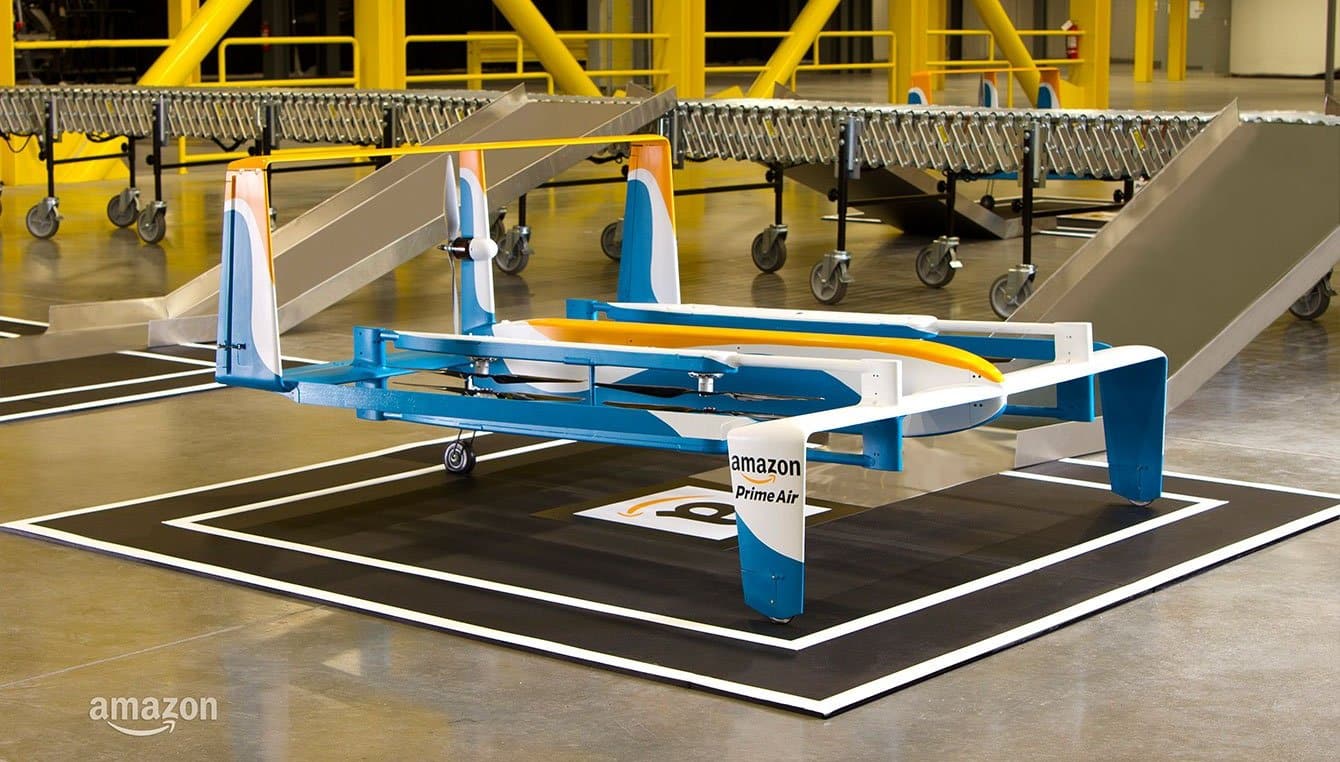After three years of deliberations and regulatory hurdles, Amazon, Inc. has finally made its first autonomous drone delivery in the U.K. The service, known as ‘Prime Air’, delivered the package containing popcorn and a Fire TV video-streaming device to a two-story farmhouse, located in a rural corner in Cambridgeshire, England in 13 minutes, covering around 2 miles. Welcome Amazon Prime Air to the skies.
The news was tweeted by Amazon CEO Jeff Bezos on December 14
A video released by Amazon shows the launch of the drone, a platform from where the takeoff was monitored and the landing pad on the customer’s lawn. The move marks a crucial step forward in the company’s plan to expand automated shipments through drones, as it looks to firmly establish itself as the leader in online retail shopping.
The company has stated that it would trial a couple more drone deliveries with customers near Cambridge, where it has a large drone-testing plant. If the trials are successful, the program would be expanded to more customers in the coming months so that hundreds could avail of the new service.
Why Amazon Chose U.K. Over The U.S. For Its Drone Delivery?
Indeed, why did Amazon Prime elect the U.K. for its drone delivery test, and not the U.S.? Because of regulation issues. The Federal Aviation Administration (FAA) had issued numerous instructions regarding use of commercial drones that it became a pain in the neck to for businesses to deal with a ton of regulations. You can read the list of regulations published by the FAA here.
‘The fact that Amazon chose to go overseas to experiment with drone delivery is totally unsurprising. FAA rules prohibit drone flights that are entirely autonomous or beyond the line of sight of human operator. The UK and several other countries have taken more pro-innovation regulatory positions. Really, Amazon had no other choice than to do these tests abroad,’ said Eli Dourado, the director of the Technology Policy Program at the Mercatus Cente.
Paul Misener, Amazon’s Vice President of Global Innovation Policy and Communications, says: ‘The UK is a leader in enabling drone innovation – we’ve been investing in Prime Air research and development here for quite some time. The UK is charting a path forward for drone technology that will benefit consumers, industry and society.’
Will The Use Of Drones Be More Widespread In The Future?
Though the use of Amazon Prime drones for commercial deliveries seems to be the future, there are multiple issues surrounding it and widespread usage depends on a number of factors, such as aviation rules, restrictions imposed as a result of inclement weather, cargo weight limitations (not more than five pounds), as well as opposition from environment activists who deem drones as a threat to wildlife and natural vegetation.
Logistical issues also prevail, like loss of power during flight, hitting a tree or person enroute, or miscreants hacking its software or shooting it out of the sky. Also, the success of drones in metropolitan cities is doubtful, owing to limited open space and congestion. However, the benefits are plenty. For instance:
- Reduced spending on logistics, labor cost to decrease
- Drones are environment-friendly, and will replace pollution-emitting heavy vehicles
- Customers will be able to receive their deliveries quickly
Commercial Drone Deliveries- Who Will Win The Race?
The Seattle-based online retailer, however, is not the first company to test autonomous drone deliveries. Chinese internet retailer and Alibaba rival JD.com has been flying drones for as far as 15 miles to reach rural communities and intends to have a full-fledged fleet, operating on 100 routes, by 2017. Domino’s Pizza has been testing drones in New Zealand to deliver fast food, while in the U.S., Google has delivered Chipotle burritos on the Virginia Tech Campus.
Amazon, however, with its deep cash coffers, logistical expertise and technological advancements, sis at the forefront to make drone delivery mainstream, maybe starting slowly with European countries, and going for the kill by expanding big in North America.














Leave a Reply